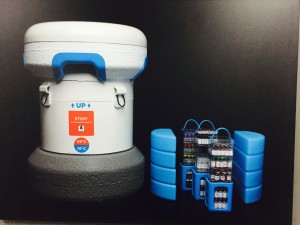In the Garage of Mr. G.
That building I went into looked like any other building. Turns out it was a laboratory. Dr. Arjomand greeted me and started to show me around. I got knocked off my feet. I saw the new world in the making. A full-fledged laboratory for new inventions, much like Edison’s in the early days of industrialization. I will remember that moment for the rest of my life.
Let me tell you what led me there. My collaborator Jussi Westergren, a great scholar, entrepreneur and philanthropist, had invited me and my colleague Sofi Kurki to visit a laboratory he had developed in Seattle with his colleagues, including former key architects of Microsoft technology, Nathan Myhrvold and Edward Jung. It is called Intellectual Ventures. The company holds over 70 000 intellectual assets and is the harbinger of the invention economy. But what does that mean?
Let me tell you my personal view on this.
Back in Finland, I happen to be president of the Runar Bäckström foundation. The idea of the foundation is to help inventors take the crucial next steps in order to bring an invention to the market. And mind you: this is a step not easily taken. Most inventors fail. Either their entrepreneurial skills aren’t as strong as their inventor skills, or they are unable to identify partners who could help them find a market for the invention.
For the economy at large, this is a waste of resources. Market economy is founded on the principle that producers meet consumers and vice versa. Similarly, there should be a market place for inventions, but one doesn’t really exist today. Inventions are seldom traded.
Think about it: in the last 15 years, a well functioning market for start-ups has developed: angel investors and venture capitalists abound, ready to help firms enter the market. Not so with inventions. They get easily stuck in inventor’s desks, or in back offices of universities. The market for inventions is largely undeveloped.
This is where Intellectual Ventures wants to make a difference. They want to create a market for applied research. They have a good point there: technological research is accumulating all the more rapidly because of increasing resources and scientific advancement on so many new fronts. Thus it makes a lot of sense that in the future, the same kind of markets would exist for inventions as now exist for star-ups, or for basic commodities.
This is particularly true if we think about the formidable challenges humankind faces. Without undervaluing the politics involved, technological solutions are needed for changing our energy system, for providing food for all people on earth and so forth. We need to use our intellectual resources in order to tackle all these problems.
That is why we need traders and midwives for inventions: those who try to find the best homes for great ideas. This is what Uber did to mobility service business or Airbnb to hotel business. Without those traders, my experience as a frequent traveller would be much poorer.
Pioneers always have a hard time. Uber and Airbnb have been accused of killing businesses whose markets they entered with tremendous force. Same thing with Intellectual Ventures: they have been accused of being patent trolls – meaning that they are cannibalizing companies by holding on to patents. But, in their words, they actually act as benefactors for inventors. They create markets for inventions that then attract investors and thus create value for the ideas, usually in the form of patents.
I believe strongly that we need these markets to grow. That’s how ideas could really find their end users. Let me tell you what I saw in the Intellectual Ventures lab:
I saw a passive vaccine storage device developed for poor countries in Africa. Vaccines require storage under a certain temperature (below 10C) to remain effective. In Africa, vaccines do not reach people needing them, because of lack of refrigeration. So, engineers and scientists in the lab created a passive vaccine storage device, which can hold down the temperature of vaccines even for a month, without any external electricity. Because of this device, thousands or even millions of people can be helped fight back harmful diseases.
This is but a small example of how tremendously important inventions can be. We need inventions to make a world better place. Dr. Arjomand pointed out to me that they see the lab as a place to tackle the hardest problems of the world. With a certain twinkle in his eye, he added: “Actually, this is the garage of Mr. G”. I nodded.
So, what else did I see in that lab? A lot of people at work building new inventions, just, as I already said, like in the old days in Edison’s lab, I would imagine. A lot of machinery and high tech space. Oh, and then I saw something else. I saw Mr. G.
I saw the man who pours more money and other resources into saving the world than any other human being on this planet.
Indeed, I saw Mr. Bill Gates.
